Beverly Cleary, 1916-2021
The beloved author of children's books had died days short of her 105th birthday.
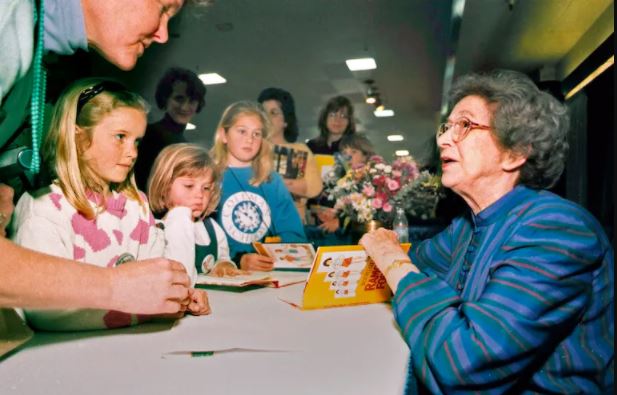
WaPo (“Beverly Cleary, beloved author who chronicled schoolyard scrapes and feisty kids, dies at 104“):
Beverly Cleary was a new librarian in Yakima, Wash., when, as she later recalled, “A little boy faced me rather ferociously across the circulation desk and said, ‘Where are the books about kids like us?’ “
She was stumped. There were many volumes about precocious British tots with “nannies and pony carts,” she said, but none that would appeal to “grubby neighborhood kids” like the boy before her — or to the adventure-seeking girl she had once been.
That encounter in the library set Mrs. Cleary, who died March 25 at 104, on her way to becoming one of the most beloved children’s authors of all time, a chronicler of childhood who found the whole of human experience within the ordinary high jinks of growing up. Her publisher HarperCollins said she died in Carmel, Calif., but did not give a cause.
Mrs. Cleary wrote more than 40 books, many about high-spirited youngsters such as the spunky Ramona Quimby and adventurous Henry Huggins, a third-grader with hair “like a scrubbing brush” and a knack for getting into gentle scrapes with his mutt, Ribsy.
In her stories, everyday problems — the challenges of managing an unwieldy paper route, dealing with a fractious sibling or coping with an absent parent — became tales of triumph.
The books sold more than 85 million copies and became, like the works of Maurice Sendak and Theodor “Dr. Seuss” Geisel, essential reading for generations of schoolchildren. They earned Mrs. Cleary some of the highest distinctions in her field, including the Newbery Medal and Newbery Honor, as well as the National Medal of Arts, bestowed by President George W. Bush in 2003.
She aimed her stories squarely at an elementary school audience and hoped that, by creating relatable characters, she would inspire in her young readers a lifelong love of books. Her writing was distinguished by what essayist Benjamin Schwarz of the Atlantic magazine once called her gift for “photographic and psychological exactitude.”
Mrs. Cleary pulled heavily from memories of what she once described as her “free and wild” youth in Oregon, first on a farm and then in Depression-era Portland, employing what she called “all the bits of knowledge about children, reading and writing that had clung to me like burrs or dandelion fluff.”
She frowned on the moralizing, didactic themes that dominated children’s literature in the first half of the 20th century, and set out not to impart wisdom but instead to portray children at play, and to capture their dialogue and the ways they sometimes venture into an adult world beyond their comprehension.
Mrs. Cleary’s stories paved the way for the more mature subject matter of young-adult writers such as Judy Blume, who credited her as a significant influence.
NYT (“Beverly Cleary, Beloved Children’s Book Author, Dies at 104“):
Beverly Cleary, who enthralled tens of millions of young readers with the adventures and mishaps of Henry Huggins and his dog Ribsy, the bratty Ramona Quimby and her older sister Beezus, and other residents of Klickitat Street, died on Thursday in Carmel, Calif. She was 104.
The death was announced by HarperCollins, her publisher.
With “Henry Huggins,” published in 1950, Ms. Cleary, a librarian by trade, introduced a contemporary note into children’s literature. In a humorous, lively style, she made compelling drama out of the everyday problems, small injustices and perplexing mysteries — adults chief among them — that define middle-class American childhood.
Always sympathetic, never condescending, she presented her readers with characters they knew and understood, the 20th-century equivalents of Huck Finn or Louisa May Alcott’s little women, and every bit as popular: Her books sold more than 85 million copies, according to HarperCollins. To this gallery of human characters she added an animal counterpart: the motorcycle-riding Ralph S. Mouse, resident of the Mountain View Inn in the Sierra Nevada.
“Cleary is funny in a very sophisticated way,” Roger Sutton, editor of The Horn Book, told The New York Times in April 2011. “She gets very close to satire, which I think is why adults like her, but she’s still deeply respectful of her characters — nobody gets a laugh at the expense of another. I think kids appreciate that they’re on a level playing field with adults.”
[…]
After two years at Chaffey Junior College in Ontario, Calif., she enrolled at the University of California, Berkeley. She graduated in 1938. A year later, she earned a degree from the University of Washington’s school of librarianship and went to work as a children’s librarian in Yakima, Wash.
[…]
“When I began ‘Henry Huggins’ I did not know how to write a book, so I mentally told the stories that I remembered and wrote them down as I told them,” Ms. Cleary said in a 1977 interview. “This is why my first book is a collection of stories about a group of characters rather than a novel.”
The book was immediately popular and generated several sequels: “Henry and Beezus,” “Henry and Ribsy,” “Henry and the Paper Route,” “Henry and the Clubhouse” and “Ribsy.” It also generated spinoffs, as Henry’s pals stepped into the limelight, notably the title characters of “Ellen Tebbits” and “Otis Spofford.”
Ramona Quimby, introduced in a small role as the annoying younger sister of Henry’s friend Beatrice, better known as Beezus, emerged as a superstar. After taking a supporting role as an attention-demanding, exasperating 4-year-old in “Beezus and Ramona” (1955), she came into her full glory, at the ripe age of 5, in “Ramona the Pest” (1968) and went on to become Ms. Cleary’s most beloved creation.
Her credo: “A littler person sometimes had to be a little bit noisier and a little bit more stubborn in order to be noticed at all.”
Ramona attracted plenty of notice among readers. She continued to torment her sister and raise a ruckus, while aging very slowly, in “Ramona the Brave,” “Ramona and Her Father,” “Ramona and Her Mother,” “Ramona Quimby, Age 8” and “Ramona Forever.” In a 2016 interview with The Washington Post, Ms. Cleary said, “I thought like Ramona, but I was a very well-behaved little girl.”
In 1999, after a 15-year absence, the character reappeared in “Ramona’s World” as a 9-year-old saddled with a baby sister and quite keen on a boy in the neighborhood.
NPR (“Children’s Author Beverly Cleary, Creator Of Ramona Quimby, Dies At 104“):
Children’s author Beverly Cleary died Thursday in Carmel, Calif., her publisher HarperCollins said. She was 104 years old. Cleary was the creator of some of the most authentic characters in children’s literature — Henry Huggins, Ralph S. Mouse and the irascible Ramona Quimby.
[…]
Cleary’s memories were cinematically detailed. In her autobiography, A Girl From Yamhill, she wrote about clamping around on tin can stilts and yelling “pieface!” at the neighbor. She was an only child, who grew up in Portland during the Depression and still remembered when her father lost his job.
“I was embarrassed,” she recalled. “I didn’t know how to talk to my father. I know he felt so terrible at that time that I just — I guess I felt equally terrible. And I think adults sometimes don’t think about how children are feeling about the adult problems.”
Cleary used her crystal-clear recall to capture the tribulations of young children exquisitely in her books. “I’m just lucky. I do have very clear memories of childhood,” Cleary said. “I find that many people don’t, but I’m just very fortunate.”
Barbara Lalicki, who edited the 1999 Ramona book, Ramona’s World, said Cleary steered the field of children’s writing away from fantasy and historical fiction. She was a “pioneer,” Lalicki said, in this “rooted-in-reality kind of book for children.”
Cleary’s books racked up awards and were constantly reprinted and re-illustrated. Librarians kept shelves devoted entirely to Cleary’s books, and teachers read the books aloud to their students.
For about 30 years — despite objections from publishers who wanted her focus on writing more books — Cleary answered all of her fan mail herself. “I learned a lot from children’s letters,” Cleary said. “Dear Mr. Henshaw came about because two different boys from different parts of the country asked me to write a book about a boy whose parents were divorced. And so I wrote Dear Mr. Henshaw, and it won the Newbery.”
Longtime children’s librarian Nancy Pearl remembers hearing “a wonderful, possibly apocryphal story” about Cleary going to speak to a class of second- or third-graders: “This little boy kept raising his hand, he had so much to ask her, and he said to her, ‘Mrs. Cleary, I understand how you write your books. … But where do you get your paper?’ … I think that’s how involved kids get in those books.”
I read a lot as a kid but, if I read Cleary’s books, I don’t much remember. I lack her cinematic recollection of my childhood. But I read my girls all of the Ramona Quimby books and they were indeed timeless. There were certainly plenty of indications that the earlier books, the first of which (Beezus and Ramona) was published in 1955, were set in a different time. But the situations and even the dialog were not outdated. Her last original book, published in 1999, was also the last of the Ramona series.
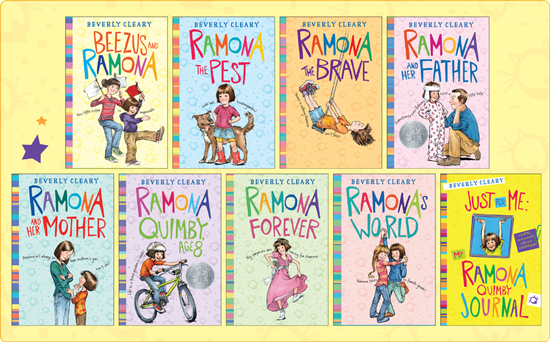
I bought the Ramona collection in September 2016 and we read the books in sequence over the next year or so, meaning my daughters were roughly the ages of Beezus and Ramona when we started. Katie would have been just shy of 8 and Ellie 5. They were probably the first novel-length books we read together.
I was naturally curious about Cleary and was astonished that she was still around. She had just turned 100 earlier that year. I’ve checked back from time to time, as recently as a few days ago, to see if she was still with us. We learned yesterday afternoon that she had passed.

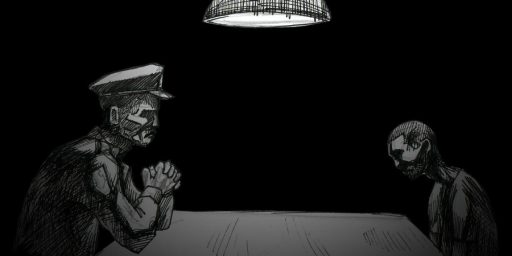

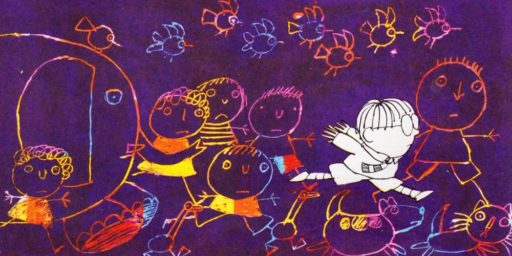
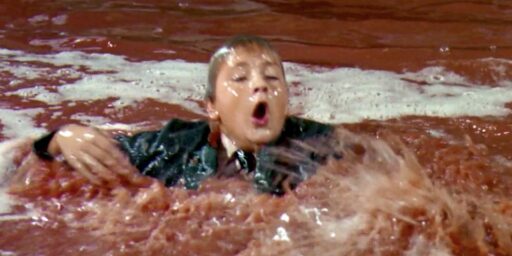
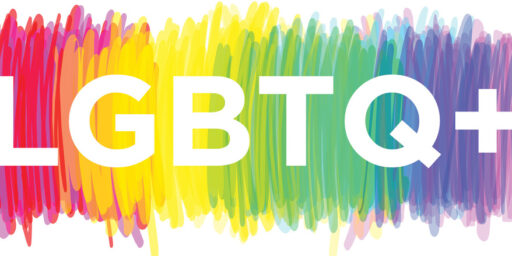
As a kid I read her Henry Huggins books over and over, and loved “The Mouse on the Motorcycle”. I have a distinct memory of buying the sequel to that one, “Runaway Ralph”, when it came out at my grammar schools book fair. And just now as I was reading her bibliography I was astonished to learn that “Leave it to Beaver” was based on her book of the same name.
@MarkedMan:
Cleary wrote the Beaver books–it was “boring work,” she later said–at the request of a tv executive who wanted a tie-in product. The tv series started in 1957; the first Cleary Beaver book was published in 1960.
I don’t recall reading any of her books, but since I read everything, including the backs of cereal boxes, I may have.
@MarkedMan:
I had the same ‘discovery’ when I looked her up years ago and was surprised that none of the obits mentioned that. It turns out, the books were based on the TV show (which was still in progress) and they commissioned her to write them.
I wrote a Tweet thread the other day on why I don’t trust Hollywood with adapting my stuff. It’s exactly this. They aren’t capable – with a few great exceptions – of seeing kids as being on the same level with adults, and it’s paradoxically worse when you get to Young Adult.
Interesting that she spent her last 20 years not writing. I’d love to know her reasons. The wife and I (64 and 66 respectively) are looking more at end of life questions. What does the survivor do if/when one of us dies first? How much more do we want to write? Do we have enough money in hand or in the pipeline to carry us for 20 years? How about if we stop pissing it away on Door Dash?
I’ve got a couple of long-haul projects in the works, and my wife (Meal Ticket) is negotiating some multiple book deals. In your 60’s you have to start asking yourself whether you want to commit to another four or five years of work. And if not, WTF are you doing with your time? Beachcomb in the Algarve? Buy a condo back up in Marin so we can help with (shudder) the inevitable grandchild?
And you may ask yourself whether you’ve had an impact, done something useful to justify your life? Is writing enough? Should we be housing refugees or something?
It was strangely comforting knowing Cleary died in Carmel. Seems like quite the appropriate place for her to spend her last years. When my dad was retiring from the Army he was offered a ‘terminal assignment’ which is a bit grim as a word choice, but OK. Cleary’s was Carmel. We’re wondering what ours should be.
How’s that for happy thoughts on a Saturday morning? Sorry, when the generation before your own takes the big sleep, makes you think.
@Michael Reynolds:
When somebody dies at 104 after a long retirement, it’s not exactly a tragedy as someone younger and still in their productive prime. It’s remarkable that McMurtry was living like someone who didn’t have all the money he could use and still writing screenplays at 83. At 55, I’m close to where older generations were getting ready to retire but I suspect I’ll still be at it at 70 if my health holds up. I don’t think I’ve got to 104. Quite possibly not to 84.
@Michael Reynolds:
Being in a position to ask those questions, and having the resources to make any needed/wanted changes sounds like a happy thought to me. “Basic needs met, now what?” Is a declaration of freedom.
Also, I completely misread “Should we be housing refugees or something?” as meaning “should we become housing-refugees?”, and briefly wondered whether housing had gotten so expensive that you and your wife were considering van life, driving through the country, living in a van.
I have some friends-of-friends doing that while waiting for permits to build their house, and they’re loving it to the point where they are talking about giving up on the house. I think their insane.
@Michael Reynolds:
To quote a recent Conan O’Brien interview, “eventually, all our graves go unattended”
Although I’m sure yours will be attended much longer than mine =)
@Gustopher:
Oh, that was careless of me. It reads either way.
In this case it was a specific thing on my mind. My wife’s been talking about buying a small apartment complex and using to house refugees with some charity that does that. We decided it was a great idea – but how about not in one of the country’s most expensive housing markets.
@James Joyner:
I’ve semi-retired twice now. At the point where we’d written over 100 books – most at a pace of one-a-month – I did other things for a couple years, including political media. Then I wrote GONE which did well enough to give me a whole second career. Then, after a bunch more books I said screw it, let’s move to London and I’ll semi-retire again. And a producer said how about adapting Gone for TV? So I did a U-turn and now I’m in LA. (Currently 82 degrees, not a cloud in the sky). Katherine is staying in-harness regardless because at the moment she’s the 4th bestselling kidlit writer in the country and never let it be said we don’t know how to ride a gravy train.
@Stormy Dragon:
Life is plenty to keep one busy without having to worry about one’s post-life period. Once you’re dead you’re off the hook.